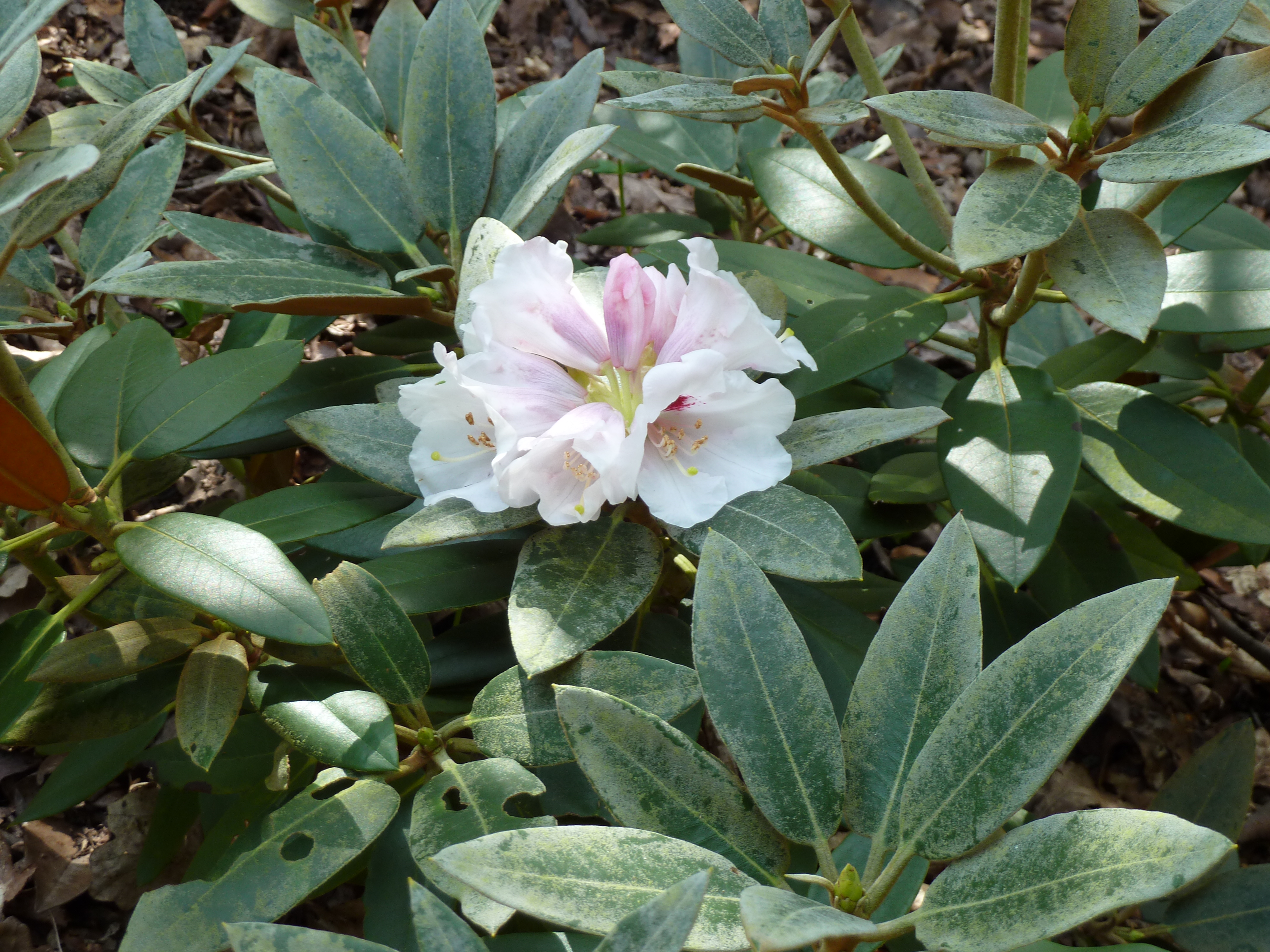Thick flowered rhododendron
(Rhododendron pachysanthum)

Description
“Pet poisonous” – Toxic parts: entire plant Rhododendron pachysanthum is a species of flowering plant in the Ericaceae family, commonly known as thick-stemmed rhododendron or thick-stalked rhododendron. It is a medium-sized evergreen shrub that is native to China, particularly in the provinces of Sichuan, Yunnan, and Tibet. This species was first described by George Forrest in 1918 and is widely cultivated as an ornamental plant for its attractive flowers. Appearance and Characteristics Rhododendron pachysanthum is a dense, bushy shrub that can grow up to 2-3 meters in height and width. The leaves are dark green, glossy, and leathery, with a length of 5-12 centimeters and a width of 2-5 centimeters. The upper surface of the leaves is smooth, while the underside is covered with dense brownish hairs. The stems are thick and woody, with a diameter of up to 2 centimeters, and are covered with a rough, scaly bark. The flowers of Rhododendron pachysanthum are one of its most attractive features. They bloom in late spring to early summer and are borne in clusters at the ends of the branches. The flowers are funnel-shaped, about 5-6 centimeters in diameter, with five petals that are pinkish-lavender in color and have a darker blotch on the upper lobe. The stamens are numerous and are arranged in two rows, with the anthers opening by a small pore at the tip. Cultivation and Uses Rhododendron pachysanthum is widely cultivated as an ornamental plant for its beautiful flowers and evergreen foliage. It is suitable for growing in temperate climates and prefers a well-drained, acidic soil with high organic matter content. It should be planted in a sheltered position with partial shade, as direct sunlight can scorch the leaves. Propagation of Rhododendron pachysanthum is usually done by taking semi-hardwood cuttings in summer or by layering in autumn. It can also be propagated by seed, but this method is less reliable and may take several years to produce a flowering plant. In traditional Chinese medicine, the leaves of Rhododendron pachysanthum are used to treat various ailments, including coughs, bronchitis, and rheumatism. However, the plant contains toxic compounds, including grayanotoxins, that can cause severe health problems if ingested. Therefore, it should not be used for medicinal purposes without proper guidance and supervision from a qualified practitioner. Conservation Status Rhododendron pachysanthum is classified as a species of least concern according to the International Union for Conservation of Nature (IUCN). However, like many other rhododendron species, it is threatened by habitat loss and degradation due to human activities, including logging and agriculture. In addition, the plant is also at risk from over-harvesting for medicinal purposes. Therefore, conservation efforts are needed to protect this species and its natural habitat. Conclusion Rhododendron pachysanthum is a beautiful and ornamental plant that is widely cultivated for its attractive flowers and evergreen foliage. It is native to China and is found in the provinces of Sichuan, Yunnan, and Tibet. The plant is suitable for growing in temperate climates and prefers a well-drained, acidic soil with high organic matter content. However, it contains toxic compounds and should not be used for medicinal purposes without proper guidance and supervision. Conservation efforts are needed to protect this species and its natural habitat to ensure that it continues to thrive in the wild and to be enjoyed as an ornamental plant for generations to come. As a plant expert, it is important to note that while Rhododendron pachysanthum is a stunning plant, it is not suitable for all gardens. It requires specific growing conditions, and the plant's toxicity should be taken into consideration. Additionally, it is important to ensure that any plant material is obtained from reputable sources to avoid the accidental introduction of invasive species or diseases. Overall, Rhododendron pachysanthum is a fascinating plant species that is a true gem in any garden. Its attractive flowers and evergreen foliage make it an excellent choice for those looking to add color and interest to their landscape. However, it is important to exercise caution when working with this plant due to its toxic nature. As with any plant, proper care and attention will ensure that Rhododendron pachysanthum thrives in the garden and continues to be appreciated for its beauty and unique characteristics.
Taxonomic tree:







